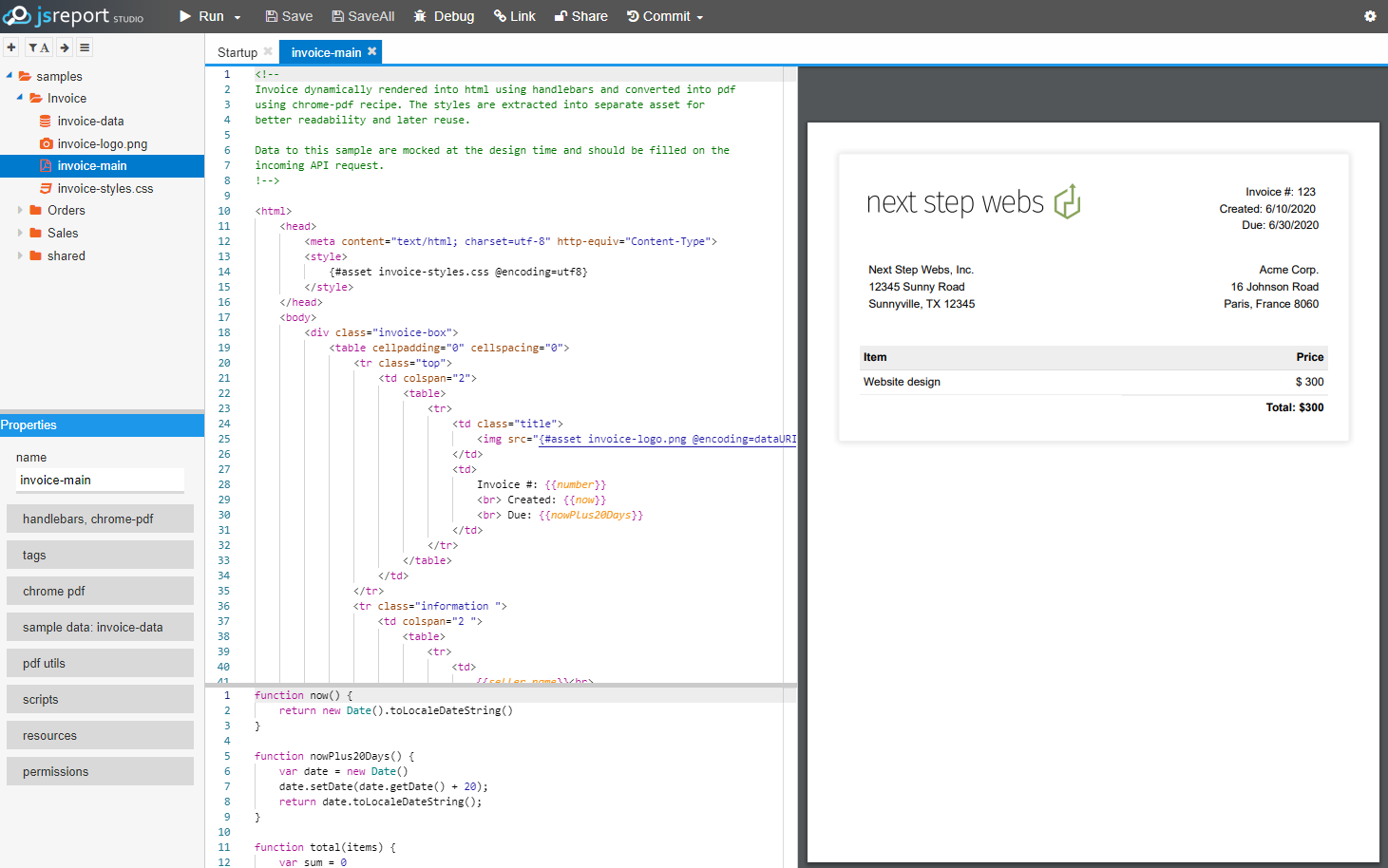

- #Nodejs pdfkit html to pdf pdf#
- #Nodejs pdfkit html to pdf install#
- #Nodejs pdfkit html to pdf code#
TheOutput.pipe(fs.createWriteStream('TestDocument.pdf'))Īt this point, we would have a really useless pdf file that doesn’t contain anything.
pipe to a writable stream which would save the result into the same directory We then need to instantiate the library and then pipe it to the writeable stream. const pdfGenerator = require('pdfkit')Īfter that, we can start to simply use it with the core file system (commonly called fs). Using PDFKit in an existing project is pretty easy.įrom the command line / terminal we need to add it is a dependency npm i pdfkitĪfter that we can use it as a module in our project by simply requiring it. PDFKit is a library that I’ve used a few times for generating very simple invoices that a template wasn’t used for. In this post, we will cover using a library to generate the pdf using just JavaScript.
#Nodejs pdfkit html to pdf code#
We are going to cover both methods though because there are times I prefer to write a lot of code and do it.

Basically – I download the existing template and sales or marketing provides me the updates. I normally prefer to use a template that is HTML based to create pdf files because this potentially allows marketing or business users to make some of the needed changes without necessarily requiring code changes to happen.

The first way is to use a PDF generation library that uses straight JavaScript/Nodejs and everything is untemplated or the other way is to use something templated in a language like HTML and then generate the pdf from it. There are two major ways to approach creating a PDF file from Nodejs. It’s a really common request for businesses to be able to export a document or data into a really well-formatted PDF file whether it be an invoice or a report. We start a new browser, without showing UIĬonst browser = await puppeteer.The PDF format is one of the most common file formats for transmitting static information. Next, you will need to create the script that will load a web page (I personally chose one of my blog posts), then inject some CSS to hide some unwanted elements (header, cookie-bar, etc.) and finally generate our PDF! //index.js
#Nodejs pdfkit html to pdf install#
The codeįirst you'll need to install Puppeteer, to do so, we will use the following command: npm install puppeteer Puppeteer can also be used to crawl web pages as I explain in this other post I wrote on the blog (in French). But this solution has a wobbly rendering, is browser-dependant (looks different on different browsers) and the text can't be selected, because it's only available as an image.īy using Puppeteer, we're simply going to use the "Print as PDF" feature availble under Chromium, but in an automated way to get a perfectly rendered document !Īs a reminder, Puppeteer is an headless browser, meaning it is able to do anything a regular browser can do, without displaying anything on the screen, which is allow us to automate many tasks like this one. It's possible to generate a pdf directly from the browser, by combining the library html2canvas to transform the DOM into an image, and then insert the resulting image into a PDF file. I'm going to show you the second solution because it's faster, it allows you to easily edit the document layout and you benefit from the rendering power of HTML/CSS. Or you can generate a PDF from a HTML document.You can either create, by hand, a PDF using a library like PDFKit for example.If you're looking to create a pdf in Javascript within NodeJS, you've got 2 solutions :


 0 kommentar(er)
0 kommentar(er)
